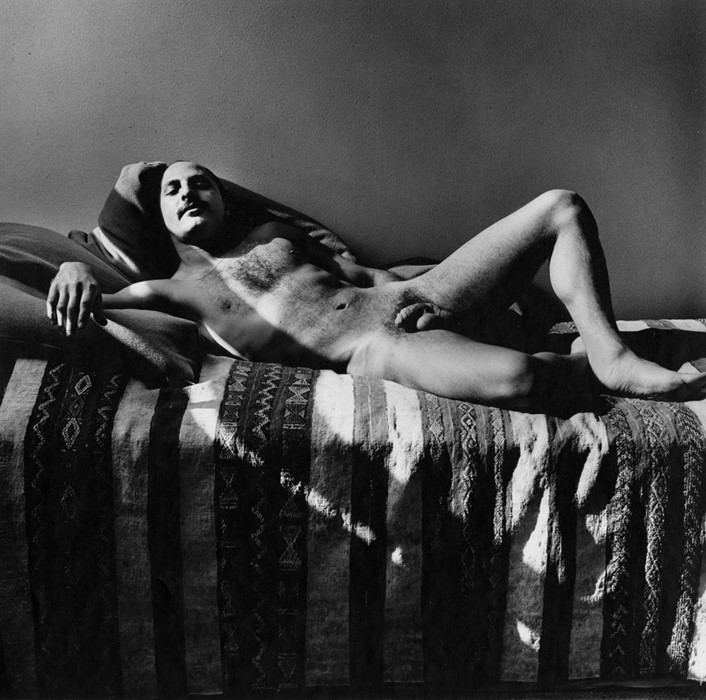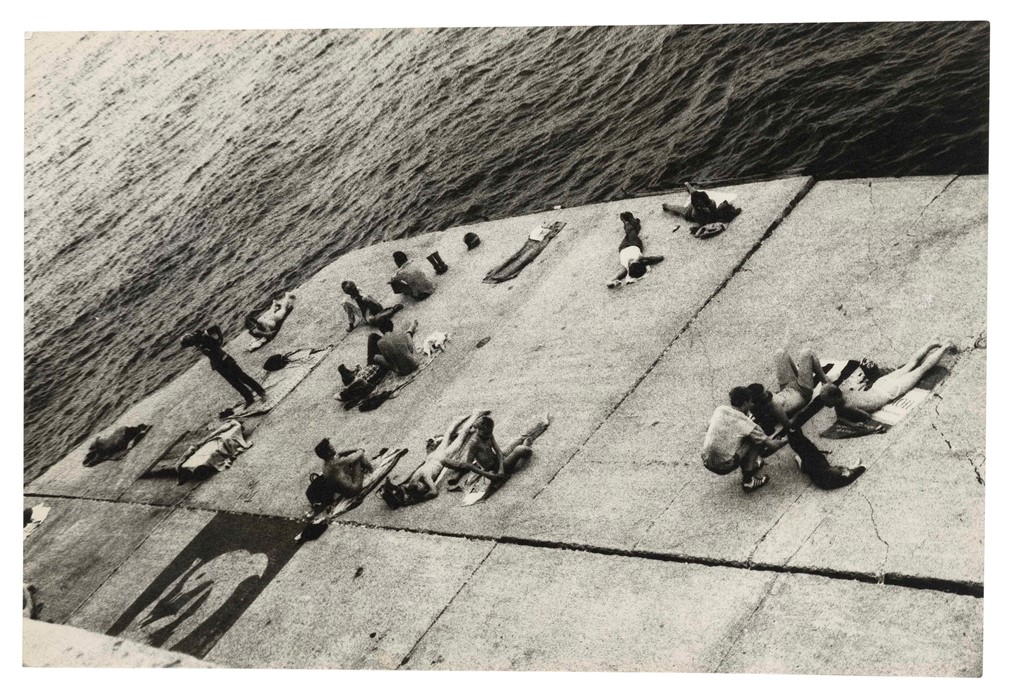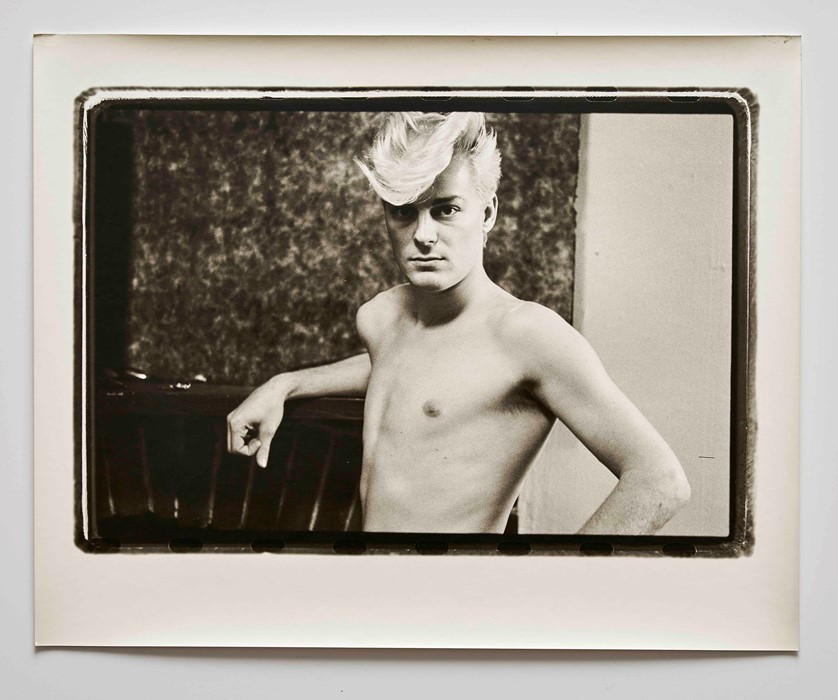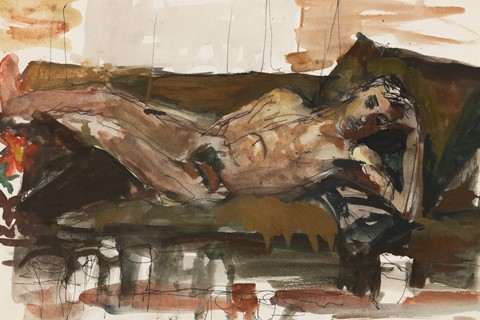A major group exhibition surveying over 70 artists working in New York in the 1980s – featuring work by Peter Hujar, David Wojnarowicz, Darrel Ellis and more – aims to expand the art historical canon of the period
Strolling through Luxe, Calme, Volupté, a major group exhibition that surveys over 70 artists working in New York in the 1980s, you are transported back to a time when a new generation emerge like the phoenix from the ashes of a city plagued by arson, poverty, and “benign neglect.” At a time when anyone could afford to live and work in New York, artists transformed the crumbling landscape into a playground for pleasure, creativity, self-discovery, community, and cultural reinvention.
Curated by photographer Allen Frame and Antonio Sergio Bessa, chief curator emeritus at The Bronx Museum of the Arts, the exhibition honours the world of artist Darrel Ellis, a native of the South Bronx whose life and legacy as a queer Black man have largely gone overlooked.
Organised parallel to the major museum exhibition, Darrel Ellis: Regeneration, which Bessa also co-curated, Luxe, Calme, Volupté brings together work by artists including Peter Hujar, Antonio Lopez, Jimmy DeSana, Philip-Lorca Dicorcia, David Wojnarowicz, Mariette Pathy Allen, and Martin Wong who helped transform the New York art scene into an open and proud celebration of LGBTQ culture across racial lines during the height of Aids.
Frame still remembers the moment he first set eyes upon Ellis at The Bar, the fabled East Village haunt home to New York’s downtown art scene. Hailing from the South Bronx, Ellis cut a distinct figure with a feather nattily tucked into his hair. Intrigued Frame struck up a conversation with the handsome youth, who had just broken up with his boyfriend and was staying at a friend’s place on Fourth Street.
“Darrel was seven years younger than me but as a New York native he was really focused,” Frame says. “He got a studio at PS1 for two years, and then entered the Whitney Program right after that. So he, like all of us, was really mobile all over town, meeting people in different scenes uptown and downtown.”

The two struck up a conversation and quickly discovered they shared a passion for family photography archives. Ellis had just received his father’s collection of negatives and prints made in the years leading up to his death at the hands of two white police officers just months before Ellis was born. Already a decade into his journey as an artist, Ellis began drawing upon his father’s photographs of Black life in the last decades of segregation for his work, creating the foundation upon which he explored the impact of trauma, absence, love and loss through a multidisciplinary approach to making art.
The year was 1981 and the New York art scene was heating up as a new generation of artists, photographers, filmmakers, performers and musicians came of age. After a decade of “benign neglect”, which left a trail of abandoned buildings and vacant lots in its wake, the city was finally beginning to rebound. Frame had just moved into a fifth-floor walk-up apartment on Perry Street in the West Village, where he regularly invited friends like Nan Goldin, Cookie Mueller, Kenny Scharf, David Armstrong and Alvin Baltrop.
Indeed, New York circles can run surprisingly small, sending a small cohort of artists skyrocketing while the rest soldier forth. During the 1980s, artists like Keith Haring, Jean-Michel Basquiat and Robert Mapplethorpe shot to fame, taking a page from Andy Warhol, and ushering in a new era of the artist as celebrity. At the same time, the art market surged as a wealth of American, European, and Japanese collectors purchased masterpieces of Western art for unprecedented sums.

Much of the legend and lore of the era has been built by market sales, and while less successful artists like Edward Brezinski largely fell into obscurity. “A canon of that time has come to exist, and we’re making an effort to reinterpret that period,” says Frame.
“With this exhibition, we wanted to create a context around Darrel’s life and experience, and in the process an interesting theme emerged that is driving the show, with the title, which is a Baudelaire reference,” Frame says, pointing to the French writer’s famous poem, Invitation to the Voyage from his landmark 1857 collection, The Flowers of Evil. Here, Baudelaire weaves an intoxicating spell of fire and desire that wafts across the page as a luminous dream evoking a world of spun gold, unfolding as a tapestry of bliss where “there is all beauty and symmetry / Pleasure, calm, and luxury [luxe, calme, volupté].”
It’s the perfect image for this sensuous portrait of promise and youth that all pursuing their dream feel so exquisitely in those first flutters of freedom. “The embrace of beauty, elegance and extravagance contrast with the brutal reality of the Aids, crack and homelessness epidemics in the 80s,” says Frame. “There’s a juxtaposition in the exhibition between the gritty struggles of the street and the desire to experience this kind of excessive opulence; the harsh contrast of beauty and destruction of the times.”
Luxe, Calme, Volupté is on show at Candice Madey in New York until 11 August 2023. Darrel Ellis: Regeneration is on show at the Bronx Museum of the Arts in New York until 27 August 2023.






